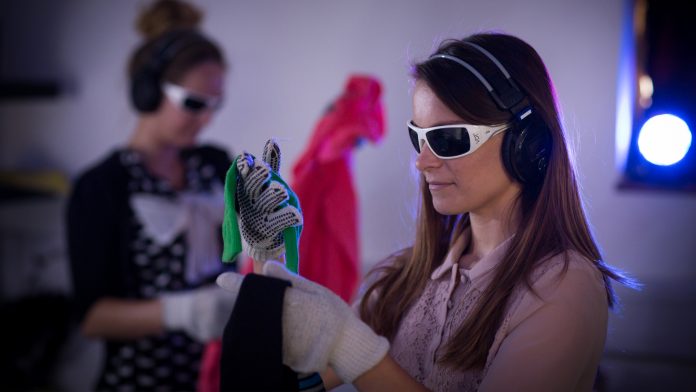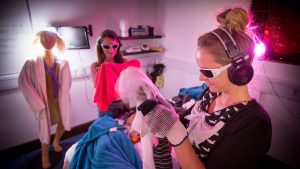
Training 2 Care’s unique experiential training provides users with a glimpse of what it is like to live as a person with dementia or autism. Managing Director Glenn Knight spoke to Health Europa to explain more.
From charities and organisations to celebrities and social media influencers, many people are continually working to increase awareness and understanding of syndromes and disorders such as dementia and autism. When it comes to professional training, admiral nurses, specially trained in dementia, are becoming a common feature in hospitals and care homes, and autism specialists are frequently utilised in establishments such as schools and community services.
Even with resources like this, however, how far can our understanding stretch if we do not personally experience living with a syndrome or disorder like autism or dementia? One organisation challenging this question is Training 2 Care, which delivers experiential training designed to provide people with the closest possible representation of what it actually feels like to have dementia or autism.
Launched in early 2010, Training 2 Care first formed as a mandatory training provider for the care sector. After several years of working solely within this focus, the company made the decision to expand its offering.
Glenn Knight, Managing Director of Training 2 Care, explained: “About four or five years in, we realised that we did not really have a USP and were doing pretty much the same as what everyone else was doing.
“The downside with most training providers is that a lot of them will use equipment already provided by the care industry. We made a commitment to invest in practical training, so we purchased our own hoists, slings, and slide sheets. Not only is it theoretical, everything is practical.
“However, there was always a niggle with me. Practical training is amazing, but I started to look at technology to see if I could use that to improve the impact of training for people. I went on a mission to find something that we could adopt or produce ourselves and it became really obvious that there wasn’t much on the market and that AI was still a little bit behind.”
A new training experience
After researching extensively online, Knight discovered a concept called the Virtual Dementia Tour, owned by a company called Second Wind Dreams in America and developed by dementia specialist P K Beville.
“I watched some videos and one stuck with me of a family member whose mum had dementia. The person put the equipment on and then started to exhibit identical behaviours and noises to their mum. It was quite remarkable,” Knight added.
Eager to learn more about the experience, Knight contacted the company behind the innovation. Although some organisations, such as Stirling University, had briefly experimented with the technology, it was not yet widely used within the UK.
“I spent a year travelling around the UK, showing people the Virtual Dementia Tour. The initial response I received was very negative. I kept getting told it would never work in this country and that it was not realistic. What I realised is that our industry is slow to change.
“Most people would have given up within six months, but I persevered because I knew it was the right thing to do,” Knight continued.
After months of knockbacks, the company eventually started receiving orders to deliver the Virtual Dementia Tour in care homes. However, due to logistical issues, Knight and the team had to adapt the experience to meet demand and ensure that it was as effective as possible.
“We decided to set up a mobile unit. This gave us the opportunity to control the environment, protect our delegates, and ensure that the experience they got was fulfilling and targeted in the right way.
“We launched the mobile Virtual Dementia Tour about a year after and, within two months, I had to buy my second because it was so successful. We now have a fleet of eight mobile units and have trained over one million people in England, Ireland, Scotland, and Wales through the experience,” Knight added.

What happens during the Virtual Dementia Tour?
The Virtual Dementia Tour is an interactive training experience designed to enhance a participant’s understanding of dementia. People taking part in the experience will wear specially developed and patented equipment designed to make them feel and act like a person with dementia.
Explaining the general reaction trainers see from participants during the experience, Knight said: “The people will experience the frustration, anxiety, and sometimes sadness of dementia. Some people will be nervous or upset. Sometimes we get swearing, sometimes we get laughter.”
After the session, the trainers run a debrief session where delegates learn about the equipment, how it was developed, why it is used, and how it corresponds with dementia. The team will also explain things like temperature and reactions to different colours.
“During the experience, we talk about why people lose things, hide things, why people with dementia will urinate in unusual places. By taking part in the Virtual Dementia Tour, people can start to understand and appreciate the subtle changes that they have to make to not only improve the person living with dementia’s life but their own life too.
“We can change lives”
“If we start to understand things from a person with dementia’s point of view, then we can change lives because we can recognise how we felt and we can remember how we dealt with it in the Virtual Dementia Tour,” said Knight.
Autism Reality Experience
As the success of the Virtual Dementia Tour continued to grow within the health and social care sectors, Training 2 Care started to receive a string of enquiries about adapting the experience to educate on autism.
Knight explained: “Autism is a massive spectrum, and everyone is different, everyone experiences different levels of autism. I wanted to invent something that was realistic for the over-sensitivities that autistic people experience every day. Using the knowledge we had of experiential training, I then went on a mission to find products that we could put on people to change their sensory perception to make them feel and act like a person with autism.
“It took me around two years to get this equipment together and then we worked with autistic people to find out how realistic it was. The great thing about autism is that autistic people are very honest. If they don’t think it’s right, they will tell you. We were continuously being challenged on the glasses that were being worn, the noises, the lighting.
“It was fascinating because we eventually reached the stage where we put people with autism through the experience and they said that it was spot on.”
After a thorough research and development process, the company realised that the mobile unit was fit for purpose to deliver an experience of both autism and dementia.

What does the Autism Reality Experience involve?
Whilst wearing the equipment provided during the Autism Reality Experience, participants are asked to watch a video of a scenario and then carry out certain tasks.
The first video is of a home setting and the company also filmed a scenario in a primary school with autistic children, so a school version is now also available. Alongside this, Training 2 Care has recently been working with Cookham Wood youth prison in Kent to develop a prison service autism experience which the prison is now adopting as part of its training.
Dementia Interpreters
The final experiential training service offered by Training 2 Care involves understanding the ‘language of dementia’.
Knight explained: “I started to recognise a few years ago that one of the biggest challenges that the care industry has is communication. I visited 100 care homes in England and I asked how many did communication training. It worked out at less than 10%. I then changed my question to how many care homes recognised dementia-specific training and it was none.
“There are not really any courses around communication, but communication is at the heart of everything we are doing in dementia and everything we are doing here.
“Everything comes down to communication. We communicate without realising.
“The inbuilt need to communicate does not stop when a person develops dementia. As a healthy brain loses the ability to speak because of dementia, it will find a new way to communicate. This is called the ‘language of dementia.’
“There is no such thing as negative behaviours. Negative behaviours are actually a positive form of communication, because the person is actually trying to communicate with you through these behaviours. You have just not understood what they are trying to do. This is why we have a need to translate the language of dementia.”
What is the Dementia Interpreter course?
In an effort to enhance people’s understanding of communicative methods used by people with dementia, Knight and the team devised the Dementia Interpreter course.
The experiential course involves wearing certain equipment to inhibit the use of a person’s usual communicative functions, such as their ability to hear or see properly. The person will then be given cards to read and communicate.
Knight explained: “We put something in your mouth, so we take away your ability to speak. Then we get you to read a card.
“We give you a set of glasses to wear that create peripheral vision loss. Peripheral vision controls our anxiety. We then put a headset on you so you can no longer see, hear, or speak. You start to feel frustrated, scared, angry, and isolated.
“The final thing we do is put a jacket on you. The jacket is very similar to a straitjacket, meaning that you can no longer communicate through body language. Once we have taken away these abilities, people’s behaviour starts to mirror that of a person with dementia.”
To complement this experience, the team set out to develop the world’s first ‘dementia dictionary’. The Dementia Dictionary connects a global network of Dementia Interpreters with the aim of translating the language of dementia.
Essentially, the dictionary works as an online forum where people can request a translation for a behaviour or action displayed by a person with dementia. Interpreters can discuss the request and come up with a defined translation for that behaviour. This will then be added to the Dementia Dictionary.
Knight said: “This Dictionary is all about sharing knowledge and adopting. The Dictionary is built on first-hand experiences. The people involved in this Dictionary work directly with people with dementia. This is a dictionary where care staff, cleaners, or cooks have the same voice as a professor because they work with dementia patients, day in day out.”
What is next?
Built on innovation, Training 2 Care is consistently drawing on learnt knowledge from the team’s own experiences and ongoing research to improve the training services it provides. As well as adapting the company’s current services to suit more conditions, the team now plans to utilise other technology to develop further courses.
Knight concluded: “There are many conditions that we are looking to replicate. As a company, we believe we have the best three products for experiential training right now. We are now looking into augmented technology that will benefit people in their own homes with dementia.”







